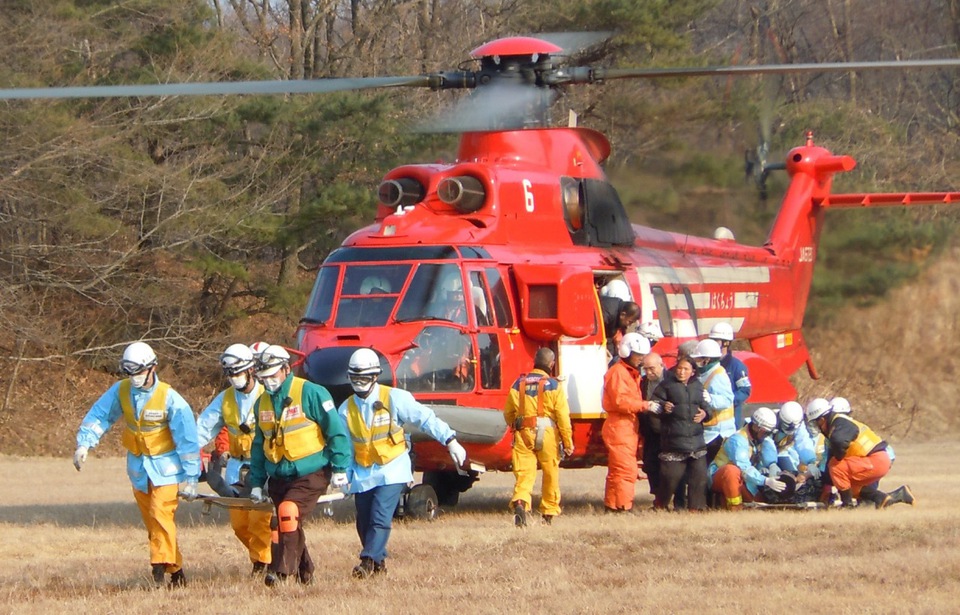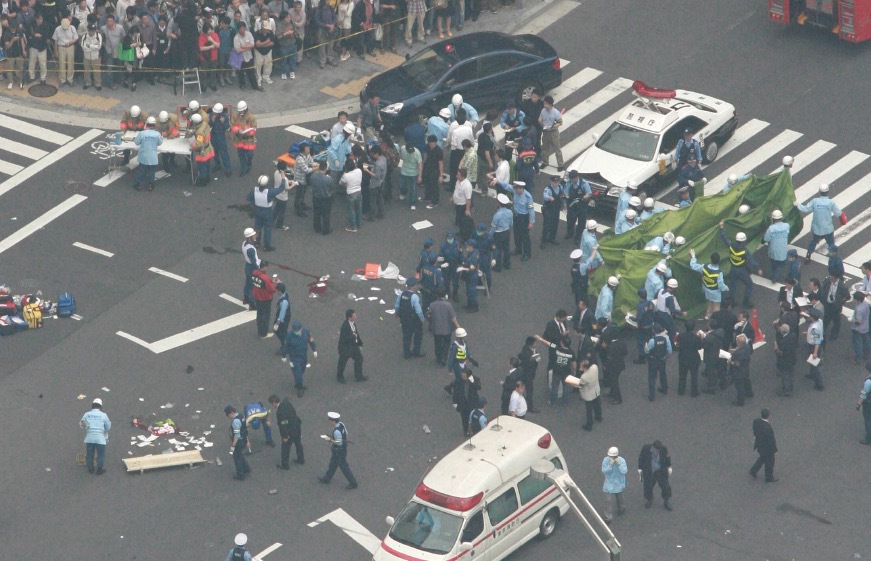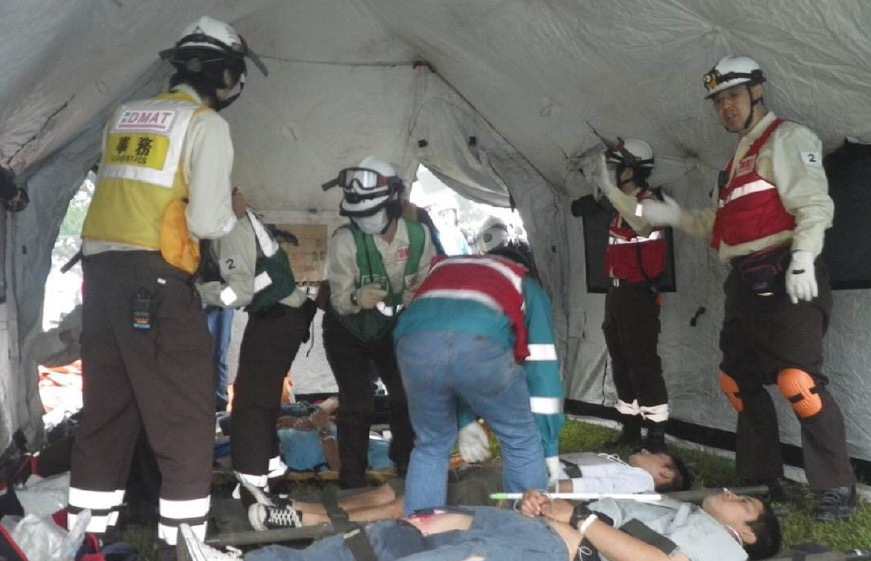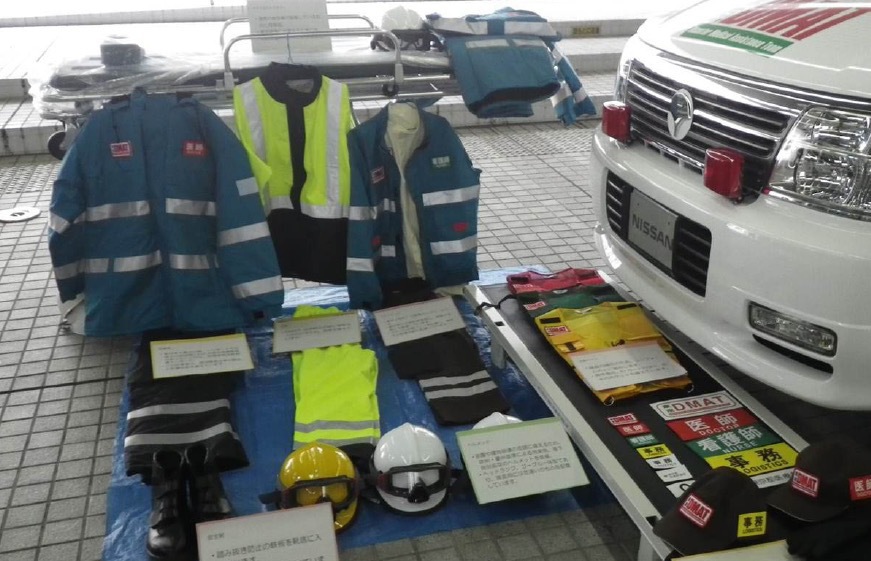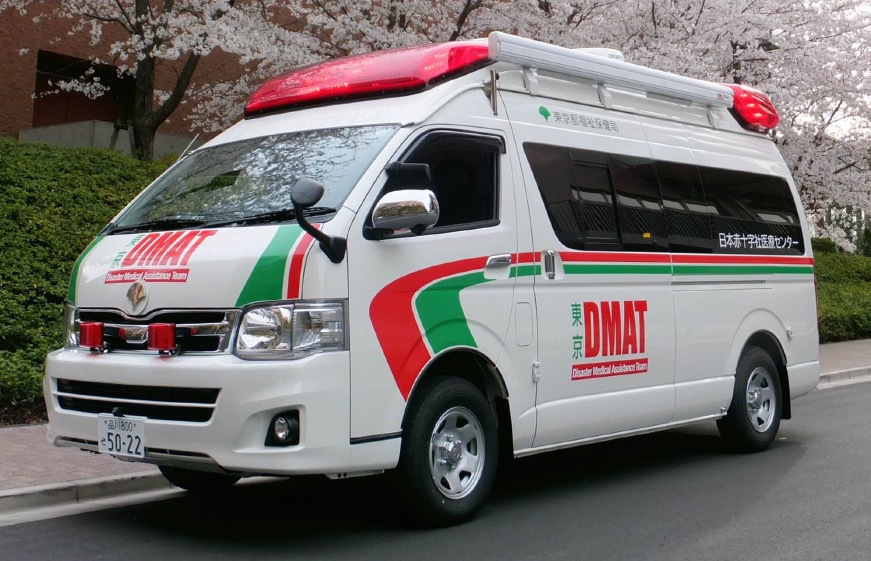Have you ever heard of “crush syndrome”? It refers to situations in which a person has been crushed under a heavy load, such as bricks, for a long period of time and, after being rescued, dies suddenly; crush syndrome drew significant attention after the Great Hanshin-Awaji Earthquake. This syndrome, against the backdrop of an increased need for appropriate on-site medical treatment, prompted the Tokyo Metropolitan Government to launch a new emergency care system of rapid-response medical teams in order to reduce such preventable fatalities after a disaster. The teams are known as the Tokyo DMAT (Tokyo Disaster Medical Assistance Team).
There is a reason this is called a “new” emergency care system. Conventionally, emergency medical treatment during a disaster consists of the rescued patients being transported by an emergency response team to a hospital equipped to take them, where they receive medical treatment. But Tokyo DMAT takes a new approach, in which doctors team up with nurses and other medical personnel and rush to the scene of the disaster. The teams are operated by the Tokyo Metropolitan Government, which enables them to work closely with the Tokyo Fire Department. When the department receives an emergency call, it first sends a team to the hospital to pick up DMAT-certified doctors and nurses. Then the team speeds to the disaster scene where injured victims are. This way the doctors can start treatment promptly under safe conditions and let the firefighters concentrate on rescue operations. Furthermore, performing triage?a process of quickly determining the priority of patients’ need for treatment based on the severity of their injuries?has enabled them to reduce preventable disaster fatalities as much as possible.
As the Tokyo DMAT is run by the Tokyo Metropolitan Government, not by hospitals, it can operate 24 hours a day, 365 days a year, and it takes only five minutes to dispatch a team to the scene of a disaster when it occurs. Teams consist of a minimum of three people, and treatment is provided free of charge. Aside from disasters, their remarkable efforts can also be witnessed in other situations where treatment is needed, such as rail and traffic accidents. Currently, over 65 percent of the cases they respond to are accidents such as these.
When an accident or disaster occurs, Tokyo DMAT is on the scene to save as many lives as possible, regardless of which country the victims are from or where they live. And it continues to enhance its system and personnel. Its membership is growing steadily?at times, the program even receives more applicants than the number required?and all Tokyo DMAT personnel must undergo training in preparation for an actual disaster or accident.
It is difficult to measure the reduction of preventable disaster fatalities in numbers. But Tokyo DMAT continues its core efforts, filled with a mission to save as many precious lives as possible of those in immediate need, and to make Tokyo a place where everyone can live in safety.
DMAT requires many pieces of equipment. Teams must be equipped not only to perform first-aid measures inside the ambulance but also to carry out necessary medical treatment.































































































































